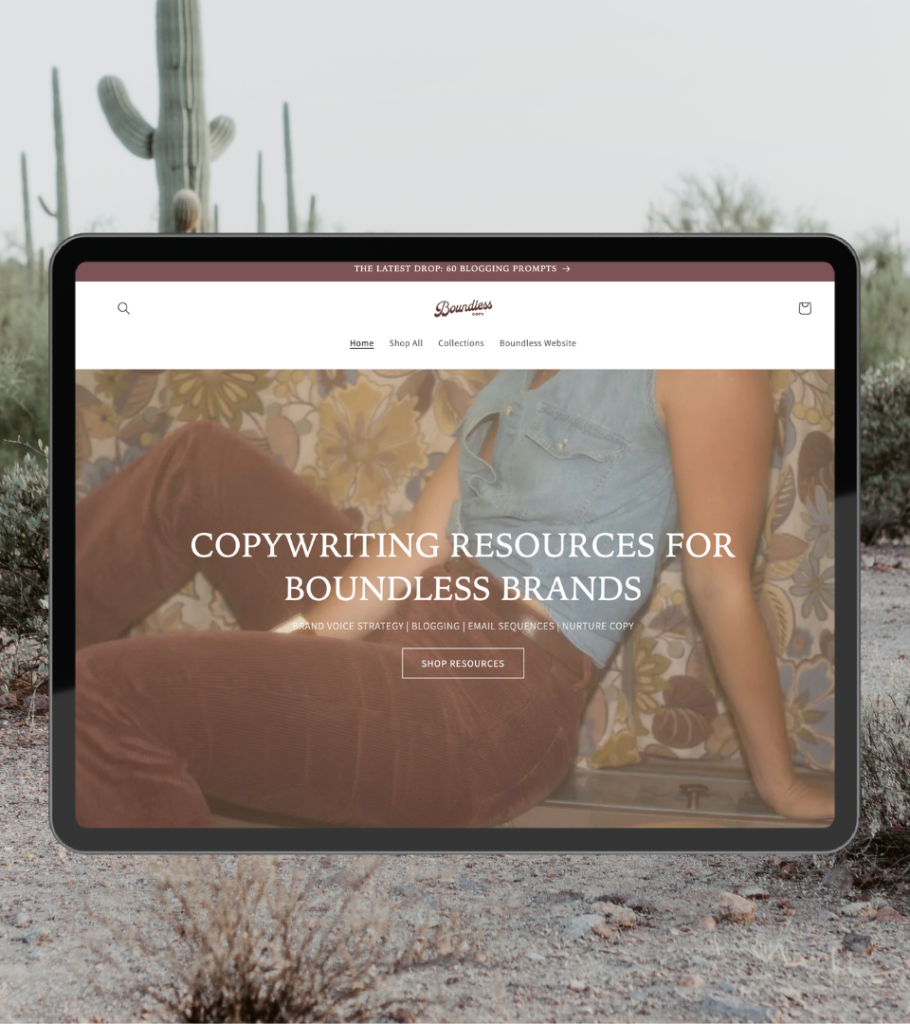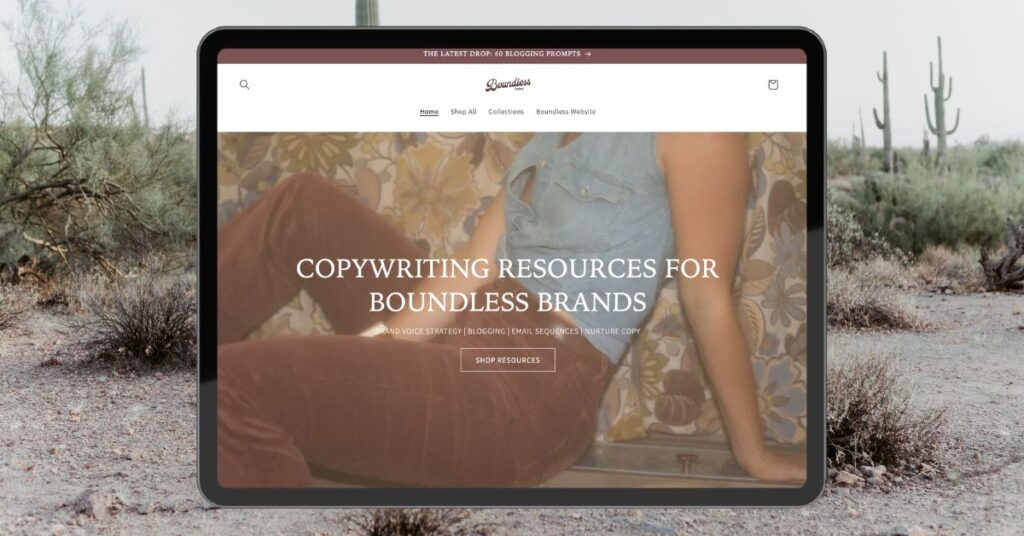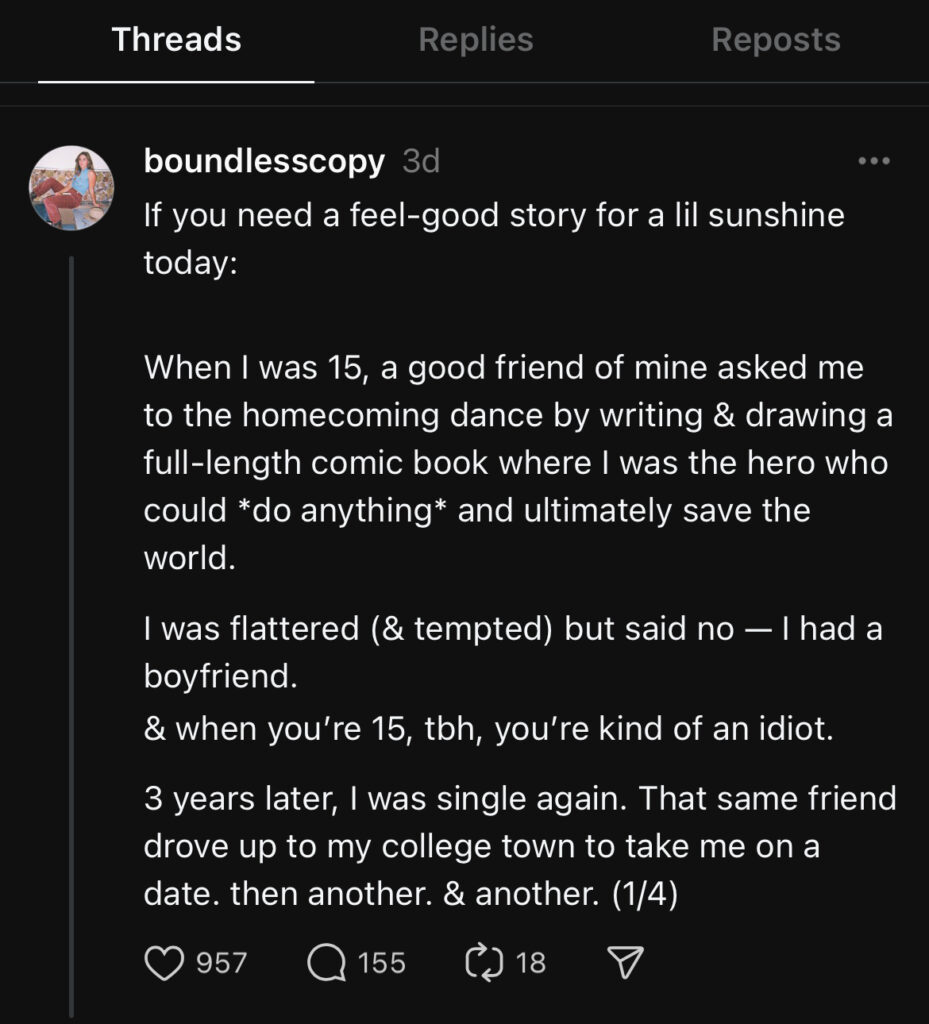How Storytelling Copy Can Help Brands Sell
What's Inside the Blog
I opened up the Threads app a few days ago and made a choice.
It was time to open up and share an ooey-gooey love story with my audience on this platform.
In a series of 500-character snippets, I walked readers through how my husband and I met when we were 15, our years-long series of awkward missed connections, and ultimately, the moment we got married at a glacial basin 11,000 feet up in Ouray, Colorado.
Look, I’m biased. But it’s a good story filled with lots of love and human emotion that made a couple hundred people share some variation of “awwwwww.”
To be totally honest, I didn’t do this for any reason other than I absolutely dig telling a great story–and I felt extra sappy that day.
But the response on that thread–something I’m very humbly calling “micro-viral” (because, let’s be honest, it was a fraction of viral attention)–reminded me of a principle I’ve known since my breaking news reporting days.
Storytelling is selling.
This is something I’m always reminding my clients and always emphasizing in the strategic copy I write.
Here are the results of sharing that story with my audience.
Responses, likes, and reposts aside, I also gained about 100 followers in single day, had two copy inquiries, and even received some cross-platform engagement on Instagram, too.
As someone with a less-than-influencer-level social media following, those were great numbers for me AND led to great leads.
That’s a whole heck of a lot of engagement, connection, and people sayin’, “Hey, you know what? I align with you.”
If you’re a brand, service pro, or business owner who’s always on the lookout for ways to connect with their dream audience, lock ‘em in, and keep them coming back for more, it’s high time you master the art of telling a good story.
Storytelling Copy 101: Why Your Brand’s Words Need Stories
The Neuroscience Behind Storytelling: Why Storytelling as a Sales Technique Works
If you’re sitting here thinking, “Wow, this copywriter really wants to sell me on storytelling as a strategy because she popped off on Threads,” rest easy.
I can assure you that the science behind this strategy came from people much smarter than me.
In fact, storytelling as a selling strategy is part of the greater world of neuromarketing – the study of people’s brains during their buying decision process.
Scientists have been doing tests for decades where they map out how consumers respond to different marketing techniques. When their neural circuits light up, eyes track a certain way, or they have some other kind of physical response, scientists scribble things down.
Storytelling as selling is one of those principles.
Essentially, scientists and psychologists have data that tells us that hearing a good, emotive story can change our brain’s chemistry.
Translation?
A good story we click with can spike our dopamine, cortisol, oxytocin, and endorphins. Those are the chemicals in our brains that make us focus, remember, and feel good.
Those feel-good feelings? They usually sway our buying behaviors.
Understanding that is one of the reasons that brands often hire copywriting pros to help them out.
I’ll say this, though–I think most people can tap into a great story without the help of a copywriter just by understanding this principle at its core.
Here’s a lil more insight on the science behind storytelling and why this works for selling to your dream audience.
Human Brains are Just Wired That Way
Like I said, this stuff is studied by smarter humans than me–but as a fellow human, I can anecdotally confirm my brain is way more on board to remember and connect with stories than cold, hard facts.
Here’s the gist of why storytelling works with how our brains are wired:
- Triggers our emotional brain: Emotion is a major factor in decision-making. Research shows that stories that click with us and target our emotions can release all those chemicals, making a story memorable and creating a deep connection with the storyteller.
- It makes our neurons fire on all cylinders: Hearing a story, getting invested in a story, and waiting in anticipation for the next part of that story creates a lil dopamine kick in our brains called “neural coupling.” Talking about your product’s features or benefits could get boring. Sharing a story that highlights those features? That can grab their attention and encourage your audience to take action.
- Stories cut through distractions: Stories help us pay attention–there are narratives to follow, emotional investments, and lessons to be learned. It’s way easier to focus on a story than a bulleted list of facts (like I’m doing right now–is that irony?) Stories do so much heavy lifting for us. They engage our brains while teaching us lessons in graspable ways. Imagine trying to learn a page full of facts with no narrative to connect all the dots. Now, imagine trying to remember a story someone told you. It’s easier, right?
Stories Build Trust & Reliability
If you’re approaching storytelling from an authentic place, you’re building trust with your dream audience because you’re saying, “hey look at me–I’m opening up to you.”
Stories humanize brands, they show our audiences we’re not faceless entities; we’re people just like them with stories and feelings and souls.
When people hear a relatable story, parts of their brain associated with trust and empathy light up like a Christmas tree. That process strengthens the bond you’re trying to build between you and your audience.
Stories Show Our Audience Who We're For
In a way, telling stories follows the principle of shouting out who you’re for. Why? Because when you’re creating narratives to show your audience how you relate to them–their fears, their pain points, their goals, their dreams–you’re being so clear about who you’re here for.
Storytelling gives you the opportunity to say, “Hey, dream audience–this is a clear signal of who my brand aligns with. Does this sound like you?”
Through your narratives, you can communicate your brand’s values and be straight-up about who you’re relentlessly chasing as your dream audience.
Stories Stick With Us
I’ve never been into bugs, but a creepy-crawly taught me a killer lesson about storytelling.
When I was in the sixth grade, my homeroom teacher kept every kind of creepy, crawly, gross bug, spider, and snake in terrariums around his classroom.
(To his credit, he was the science teacher).
No matter how many times I looked at all the labels on the tanks or read the info sheets spread throughout his room, I could never tell the difference between one terrible spider and another and certainly could not distinguish between the super dangerous ones and the harmful ones.
As a Florida girl, though, it was important to know these things.
Then, one day, he told me an absolutely nail-biting story about a Brown Recluse that got loose in the classroom a year before. He was describing everything in detail. I was hanging on his every word.
How did the spider get loose? Did they catch it? Its markings looked like what?
I was hooked.
Nearly 12 years later, I was showering at a campground clear across the country on Orcas Island in the PNW. I looked up at the corner of the shower, and I saw it – a Brown Recluse.
I remembered every single detail of the story my teacher shared with me in an instant.
That’s how I knew to run screaming out of the shower practically naked into a campground full of strangers. (A story for another time).
Stories stick with us–forever.
Imagine the power of your words making an impact like that on your dream audience.
(But like, in a not-spider-scary good way).
Including Storytelling Copy in Your Strategy: Some Quick Tips
Listen, business owner to business owner, I’m not telling you to pop open your diary and post it on your blog.
Storytelling–and how we employ it–is going to look different for everyone.
I can tell you with 100% certainty that I don’t think that storytelling is about cracking open every element of your personal life for the world to gawk at.
Instead, I think it’s a balance between authentically and vulnerably sharing stories that are relevant to your audience, your industry, and your brand’s goals.
I’ll give you an example.
The brand identity at Boundless is based on several different values–transparency, humanity, and optimism are the main three.
To me, that does mean opening up about as much as I possibly can–because my brand’s values are rooted in messy human emotion, the sunny side of life, and openness.
That means my audience gets my stories about my dog’s second birthday and how we found him. They get the story about how I sobbed on the beach after my first freelance writing client bailed on paying me $50 lousy bucks.
They get my stories of doubt, triumph, and clarity–because that’s what aligns with my brand.
Here are a few things to think about when you’re infusing storytelling into your brand’s copy strategy:
- Start with the Hook: I know we’ve all read stories that start with “once upon a time,” but consider this your invitation to hook your audience from the start. Let’s say you’re a skincare specialist who serves acne-prone individuals. You want to share your brand’s origin story in a way that resonates with them. Instead of just saying, “I started my brand because I also struggled with acne,” you could say, “The flareup on my chin right before graduation was the last straw–I officially went to war with my cystic acne.” Like….what? Tell me more. What happened next? Hook ‘em in.
- Be Authentic: Making up stories is not the same as engaging storytelling. If you really want to connect with your audience, be real, genuine, and authentic about the stories you’re sharing.
- Emotion is Everything: Don’t just tell the story–lean into how the story feels. Tapping into emotion–and being real about it–is the key to telling a gripping story that gets someone’s emotional brain invested. Transformative feelings, rollercoasters of emotions, and anticipation are all elements that make up a great story.
Storytelling Copy is a Must for Selling
As a copywriter who has a background in newspaper journalism, the first thing I learned on the job was that no one is buying papers if they’re not invested in the story.
Telling stories as part of your messaging and marketing strategy strengthens your bond with your audience, delights your people, and entices them to invest in you.
Infusing these principles into your content and copywriting strategies is an absolute must for brands seeking those connections! And you know what? Boundless is here to help. If you want to chat about how we can fuse the power of storytelling into your brand’s words, we’re here for you.
Reach out to us to chat about what this could look like for your brand’s copy strategy.
A Few More Must-Reads
CONNECT & CONVERT – IN YOUR OWN WORDS
BOUNDLESS COPY SHOP
Killer copy on your to-do list? We’re down for the get-down. We love a DIY kinda brand who’s game to bring major magic to their words.
This shop is filled with done-for-you & done-with-you resources, templates, & education to spice up your copy, talk directly to your people, & bring your brand voice to life.

BOUNDLESS COPY SHOP
CONNECT & CONVERT –
IN YOUR OWN WORDS

Killer copy on your to-do list? We’re down for the get-down. We love a DIY kinda brand who’s game to bring major magic to their words.
This shop is filled with done-for-you & done-with-you resources, templates, & education to spice up your copy, talk directly to your people, & bring your brand voice to life.







